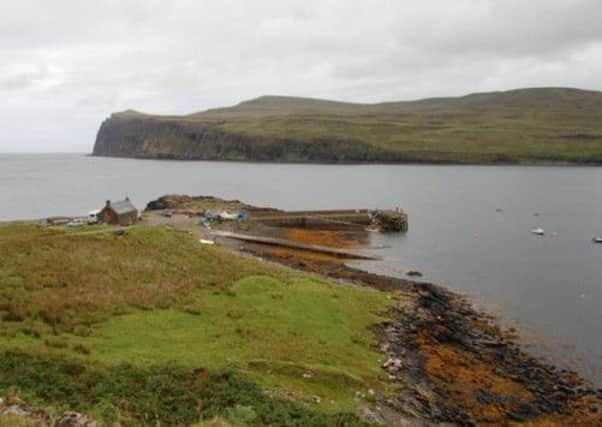Meanish pier on Skye to get major facelift


The Glendale Trust has purchased the land at Meanish Pier from Highland Council for a mere £1, and it now plans to spend up to £120,000 to bring the decrepit slipway back into use.
The jetty’s long and colourful history includes a period during 1882 and 1883 when local crofters rose up against their laird who was clearing land of tenants to make way for large-scale sheep production.
Advertisement
Hide AdHMS Jackal was sent into Loch Pooltiel to land marines at Meanish Pier to aid in the arrest of the rebellion’s ringleader.


The pier was also important to trade and helped to link the area with other parts of Skye and the mainland.
Trust chairwoman Joy Talbot said: “The future now is really exciting.
“The pier is in a very poor condition and is currently too short for practical use at low tide.”
She said the pier’s potential future uses were still being explored, but the hope was to bring it back to life for use for the benefit of commercial and leisure users.
Elgar Finlay, the trust’s development officer, said: “We want to make sure it is usable for the people in the area and the local community, in particular improvement to the slipway which needs immediate repair and a possible extension.
Advertisement
Hide Ad“The minimum repair is about £40,000 and a complete upgrade is up to £120,000, which is quite a significant investment.
“We want to look at ways to use the pier to justify spending that amount of money.”
Advertisement
Hide AdA public meeting is planned to discuss the future, with hopes it could be used by fishermen, both commercial and leisure, as well as tourists visiting on yachts.
Improvements to infrastructure would immediately allow local fishermen to use the slip way at low and high tide, increasing the productivity.
Mr Finlay said talks would take place with various community groups, including Glendale Moorings Association,as well as the Crown Estate.
Up until the 1950s road transport to Glendale was very limited, with the main access into the community being by sea.
Glendale also used to have regular visits by steamers, such as the SS Hebrides.
In 1882, John MacPherson of Milovaig led an uprising against the landlord of the Glendale Estate, who was seeking to clear the crofters from their land to make way for, more profitable, sheep.
Advertisement
Hide AdHis actions led to the Royal Navy gunboat, Jackal, landing a troupe of marines at Meanish Pier in early 1883 to effect MacPherson’s arrest.
MacPherson was taken to Edinburgh and imprisoned for two months.
Advertisement
Hide AdHis stance encouraged others into defiance and the actions of these “Glendale Martyrs” led to the formation of the Napier Commission and security of tenure for crofters throughout Scotland.
A memorial to the Glendale Martyrs now stands beside the B884 on the pass that divides Glendale from the rest of the island.
For centuries, there was only a drover’s track connecting Glendale to the rest of Skye, along the course of what is now the B884 Glendale to Dunvegan road.
Coal and supplies were brought in by the regular Glasgow-to-Dunvegan coastal puffer that docked at the pier. This boat service continued until relatively recent times and older residents of Milovaig still remember selling their potatoes to the boatman for half a crown a sack.
In 2008 it was again made a famous TV appearance for a Volvo advert.
The scenes filmed at Meanish Pier involved a lifeboat crew speeding to a made-up coastguard hut (the pier shed) to rescue a stricken yacht, with a helicopter taking off as the car approached.
Advertisement
Hide AdThe scene was later digitally altered to make it look like a stormy night, when in fact it was a glorious sunny day when filming occurred.
Bowsers were used between takes to wet the road and buildings, and spray the car as it approached.